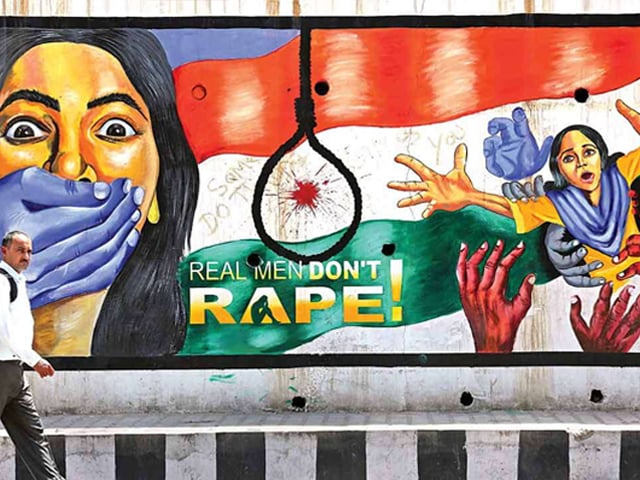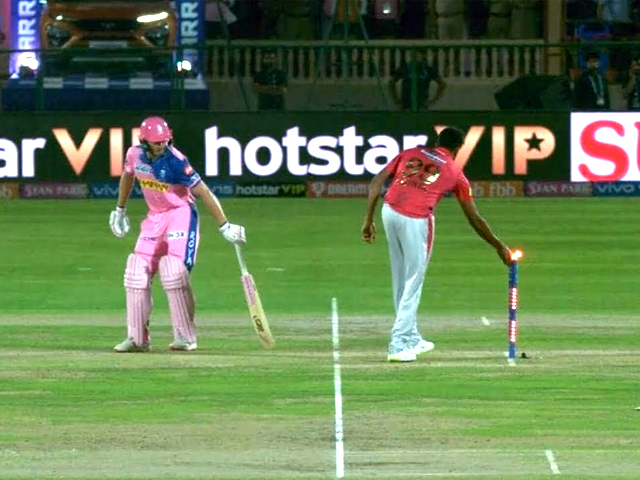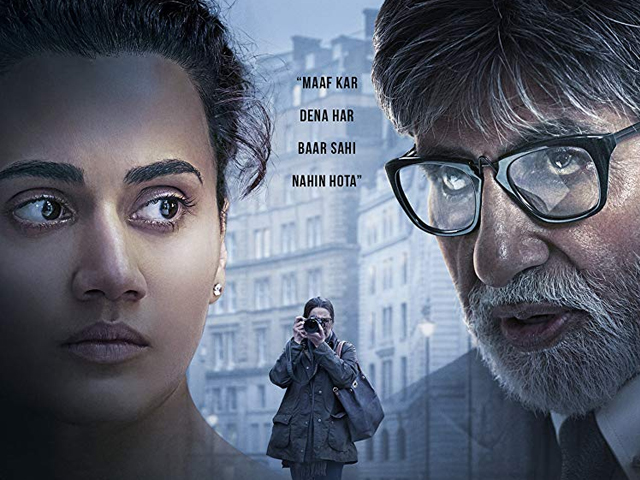
A man walks past a graffiti depicting a message in protest against rape, in Jammu on Sunday. PHOTO: REUTERS
Why India will continue to be the world’s most dangerous country for women
On paper, many laws exist in favour of women but getting them enforced by those with a patriarchal mindset is daunting
India’s record on women’s safety is never too far from global attention. Over the years, India has developed a reputation of being an unsafe country for women. The latest spotlight on this has been cast by the recent Thomson Reuters Foundation survey that ranked India “the world’s most dangerous country for women due to the high risk of sexual violence and being forced into slave labour”.
In a misogynist world that includes the likes of Somalia, Saudi Arabia, Iran, Mexico, Pakistan and Afghanistan, getting the dubious distinction of being top ranked has understandably caused a great deal of indignation and outrage in India. While India’s record has been dismal, it is also fair to note that issues pertaining to women’s rights, sexual violence and gender disparity are endemic across the world and that there are different aspects to this problem seen in different countries.
Women in countries such as Mexico, Bolivia and Brazil are equal participants in economic life and are not compelled to cover themselves up or stay away from public spaces, unlike in conservative, segregated Islamic countries. However, these machismo laden Latin American countries still suffer from horrific sexual violence and trafficking.
For example, statistics show that 44% of Mexican women will experience some form of sexual violence during their lifetime and an estimated 91% of these crimes go unreported. Statistics from other countries in the region are equally disturbing. Similarly, sexual slavery and trafficking are rampant in Mexico.
The nature of the problem in countries like Saudi Arabia, Afghanistan and other orthodox Islamic nations is very different. In these countries, women do not have many rights and most often aren’t even allowed outside their homes without a male relative accompanying them. Till very recently, women in Saudi Arabia were not even allowed to drive.
Given this socioeconomic dynamic, the nature of the debate therefore becomes very different. Women’s exclusion from public spaces vastly reduces the scale and scope for random sexual violence like the kind seen in other parts of the world where women are out there on the streets, making a living, going to school, and generally making a presence.
The absence of alarming statistics and harrowing public narratives from these countries does not mean that women are happy, safe and secure. It just means that a lot is kept under wraps and they do not even have a voice. It’s noteworthy that rape victims in the UAE have been punished for adultery. In some countries, for rape to be proven, four witnesses are required. Women also often do not have the same inheritance or other legal rights as men. Polygamy and triple talaq (divorce) are just some practices that show just how vulnerable women are in the Islamic world.
The issues highlighted in the rest of the world are in no way meant to deflect the attention from the problem in India. While India being labelled “the most dangerous country for women” might be debatable, there is no doubt that India has a lot of ground to cover when it comes to ensuring a fair deal for its women.
Over the decades, the state has done its bit to improve women’s rights. There are no legal restrictions on women and they are increasingly stepping out of their homes and participating in economic activities across sectors and seniority levels. In large cities, it is not unusual to see young women working late night shifts at Information Technology (IT) and Business Process Outsourcing (BPO) companies, often stepping out of the office premises for a late night snack or cup of tea. They are joining the armed forces, flying as pilots, and working in high technology industries. India’s women athletes are competing on the world stage and winning medals and glory for the nation.
There are laws that protect married women from domestic abuse and prohibit social evils like dowry and female infanticide. Campaigns like “beti bachao, beti padhao” (educate your daughter, save your daughter) are intended to change patriarchal mindsets.
These factors demonstrate that the status of Indian women is gradually improving, and in large measures, they have the opportunity and the platform to move out of their traditional restrictions and fulfil their ambitions.
However, despite these initiatives and improvements, sociocultural attitudes are still highly prejudiced towards women, and mindsets are still locked in patriarchy across vast swaths of the country. So while on paper, many laws exist in favour of women, getting them enforced equitably by state machinery that comprises of individuals with a deeply patriarchal mindset, is a daunting task.
A corrupt and stretched law enforcement system also makes it easier for sexual criminals to escape the consequences for their actions, thereby reducing the power of deterrence.
In recent times, the government has disappointed by not pushing through legislation on marital rape under the pretext of “Indian family values” and has also made some attempts to weaken anti-dowry harassment provisions. The orthodox segments of society have successfully projected their counter-narrative, thereby causing a setback to some of the progress of the last few decades.
The pace of social change is also painfully slow. Women are considered inferior and the girl child is still seen as a burden in large parts of the country. Dowry, though illegal, is widely prevalent. Domestic violence and exploitation are endemic and women have little recourse, either due to economic compulsions or social stigmas.
India is at a point where different segments of society are at different stages of social evolution. Males with regressive mindsets see girls out and view them as “fair game”. The increased presence of women in public spaces increases the “opportunities” for violent encounters, especially given the country’s primitive law enforcement systems.
This brings us to an important area that needs to be tackled, and that is the sense of male entitlement. Most government campaigns have thus far focused on parents or would-be parents of girl children, encouraging them to allow their daughters to grow and flourish. However, it is equally important for the parents of male children to instil the right values and gender sensitivity in their sons. For Indian women to be truly empowered and free, Indian men need to be taught to be less of predators and more of enablers.
And in this endeavour, a judicious mix of positive reinforcement and deterrence is required. Zero tolerance from sexual misbehaviour is a starting point. Stricter action must be taken by the police and courts in cases of sexual misconduct.
Much deviant behaviour gets legitimised through media, like films and songs. Indian movies and songs can still be seen reinforcing and condoning regressive behaviour such as stalking and “not taking no for an answer”. Indian media needs to be more circumspect about the values they showcase. The ideas of machismo, female subservience and male entitlement need to be completely dismantled in Indian society.
The pace of change and improvement in the lives of Indian women needs to be hastened. There is no escaping the fact that India has failed millions of its daughters and continues its ambivalence to their wellbeing. This is unconscionable and unpardonable. Till the nation tackles this issue head-on and applies its collective will to driving mass change, India will continue to feature on lists that highlight the worst countries for women.




COMMENTS (21)
Comments are moderated and generally will be posted if they are on-topic and not abusive.
For more information, please see our Comments FAQ